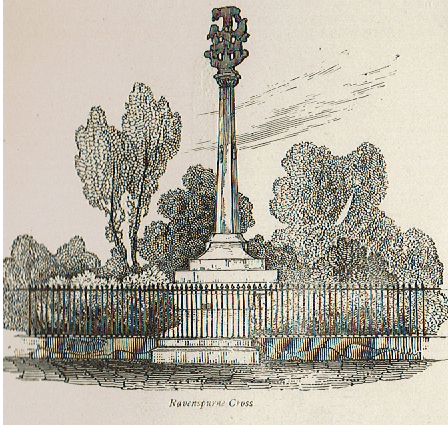
Some ancient crosses of Holderness – Tindall Wildridge firstly summarises the various symbolism related to crosses over time such as pre-Christian, freemasonry and identifying a site of evil doing or national significance. He then focusses on the various functions of public crosses in Christian times; headstones, ‘stations’ related to religious processions, preaching crosses, market crosses which evolved to have a ‘purely mercantile convenience’ and boundary markers as with parish boundaries or, more likely in my opinion, to define the edge of religious authority as with the sanctuary ‘crosses’ (or stubs of) of Beverley Minster (pre-Reformation). As regards crosses at crossroads Tindall Wildridge informs us that crossroad sites were considered ‘next in sanctuary to the churchyard’ and thus became burial sites for those debarred from churchyard burial. Therefore, he argues, crosses were far more common in the landscape of past times than today (1880s).
Tindall Wildridge identifies 11 public crosses in ten Holderness communities although most had been damaged over time. I think a researcher would be hard-pressed to find any surviving evidence of most of these today.
In a garden in Hedon, then as now, was/is the most intact one of the 11, and the most finely carved. Legend has it that this was originally erected on Spurn spit to commemorate the landing point of the Duke of Lancaster, later King Henry IV, in the 15th century, a significant national event. Following a series of moves, initially to avoid being lost to coastal erosion, it ended-up at Hedon (see image above copied from p.38). As with many crosses it has a stepped base (plinth) with a column in the centre topped by a carving. The curious form of this carving symbolises something but I don’t know what.
The remaining places with surviving bits of a local cross in the 1880s will be covered next time.